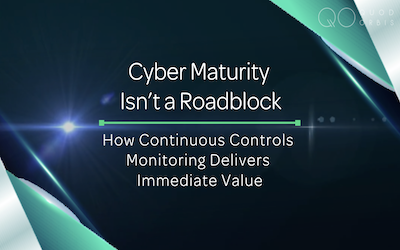What Does it Mean to have Total Asset Visibility and Why is it Imperative for Businesses?
Total Asset Visibility is a comprehensive and real-time understanding of all the assets owned, used, or managed by a business. These assets can include physical items like inventory, equipment, machinery, vehicles and facilities, as well as intangible assets like intellectual property, data and software licenses. What’s important to remember as well is that Asset Visibility must include on-premises and cloud tech, as well as ascertaining any legacy kit that may be lurking around that could be a potential threat to your business.
Having total asset visibility is crucial for businesses as it offers several benefits and advantages that simply cannot be ignored if you are to protect your business in an ever-increasing threat landscape with regulatory compliance changes.
Cyber Risk Mitigation: By knowing the status and location of their assets, businesses can proactively identify potential risks, such as theft, loss, or damage, and implement measures to mitigate these risks effectively. If you don’t have a comprehensive complete view of what you’ve got, it’s an impossible task to be able to reduce your cyber risk.
Compliance and Auditing: Total asset visibility facilitates compliance with regulations and standards by enabling businesses to keep track of asset-related data and history, which is valuable during audits. As there is huge and constant regulatory compliance change happening for the foreseeable future, in order to accurately and with confidence provide assurance and evidence of compliance, then it is imperative that you understand what your assets are, where they are, and what potential threats they pose.
Enhanced Decision-Making: With a complete view of their assets businesses can make informed and data-driven decisions about allocation, maintenance and disposal of assets. This helps in optimising resource utilisation and reducing operational costs.
Improved Efficiency: Total Asset Visibility allows businesses to track the location and condition of assets in real-time. It enables better asset management, streamlines operations, reduces downtime and increases overall efficiency.
Inventory Management: For businesses that deal with inventory, having total asset visibility helps in accurate inventory tracking, reducing stock outs, preventing overstocking and minimising inventory carrying costs.
Customer Service Improvement: Businesses that rely on asset-intensive operations can use total asset visibility to enhance customer service. For example, in the logistics industry, knowing the real-time location of shipments allows companies to provide accurate delivery estimates to customers.
Data-Driven Insights: The data collected through total asset visibility can be analysed to gain valuable insights into asset performance, maintenance patterns and overall business operations. These insights can help to develop long-term strategies and improvements.
Asset Life cycle Management: Total Asset Visibility supports effective asset life cycle management, including planning, procurement, utilisation, maintenance, and disposal. This helps businesses optimise their asset investments and extend the useful life of assets.
Security Coverage: Organisations receive a comprehensive understanding of their IT environment by identifying their vulnerabilities because all devices, software and services are visible, so all critical assets are protected. However, the superior security coverage that asset visibility provides covers:
- Risk assessments are thorough: all assets are visible, so any risk is easily visible.
- Threat detection effective: any anomalies or potential threats can be seen immediately for example, intrusion detection systems (IDS) and intrusion prevention systems (IPS) use asset visibility to monitor network traffic effectively.
- Incident Response: In the event of a security incident, asset visibility is crucial for a rapid and effective response. Security teams can isolate affected assets, assess the scope of the breach, and take corrective actions more efficiently when they have a clear understanding of the environment.
- Patch Management: Keeping software and devices up to date with security patches is vital for maintaining a strong security posture. Asset visibility helps organisations identify which assets require patching and ensures that critical security updates are applied promptly.
- Reducing Attack Surface: By continuously monitoring and managing assets, organisations can reduce their attack surface.
Ultimately asset visibility improves security awareness across the whole business whilst also allowing you to be more cost effective when identifying decommissioned assets and reducing operational expenses with any assets, so it is a foundational element of cyber security that enables organisations to better understand and protect their IT environment. It enhances security coverage by providing insights into potential vulnerabilities, facilitating risk management, enabling effective threat detection and response, and promoting overall security awareness and compliance.
Take a look at how our CCM can support your Asset Visibility




















